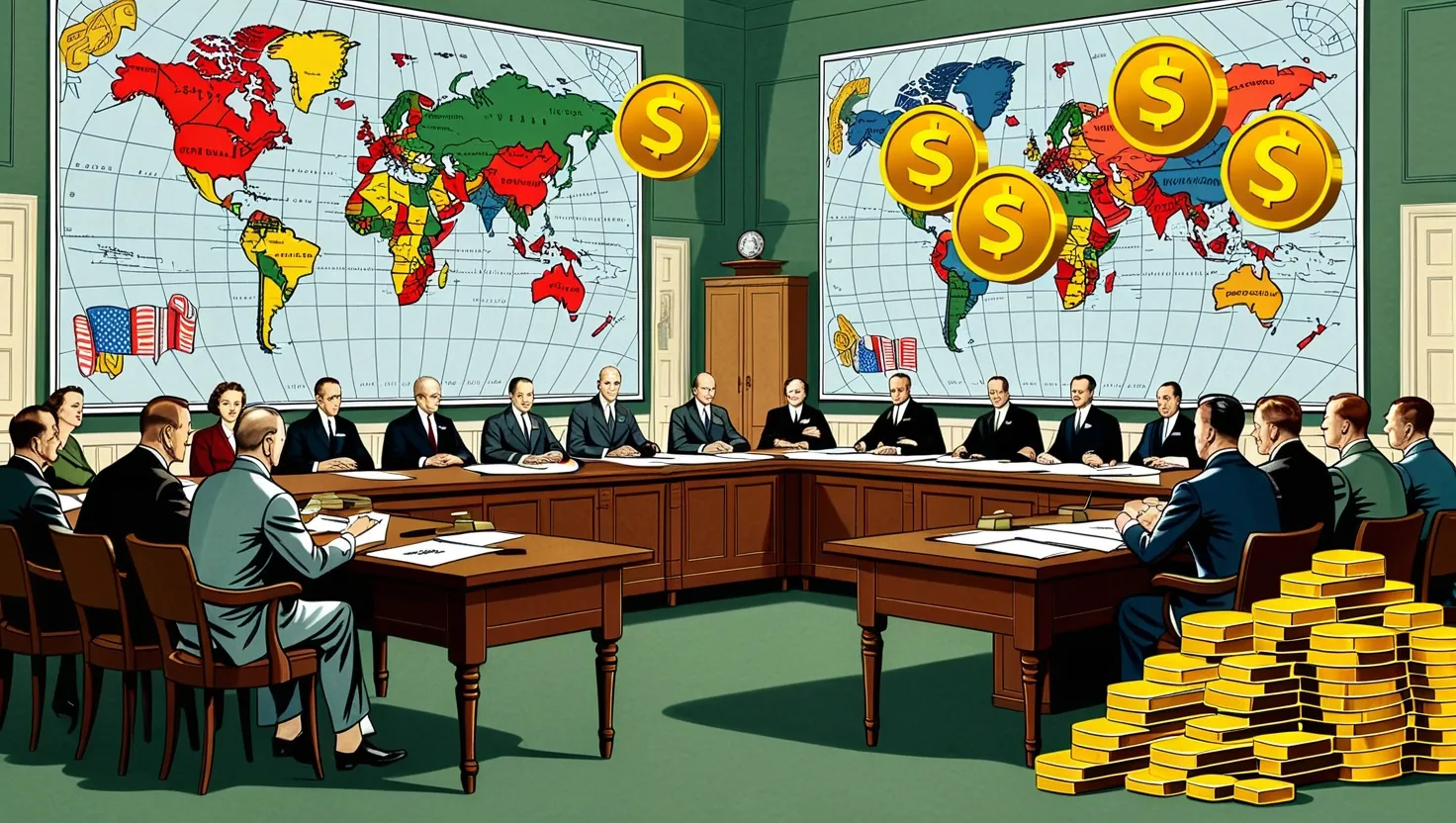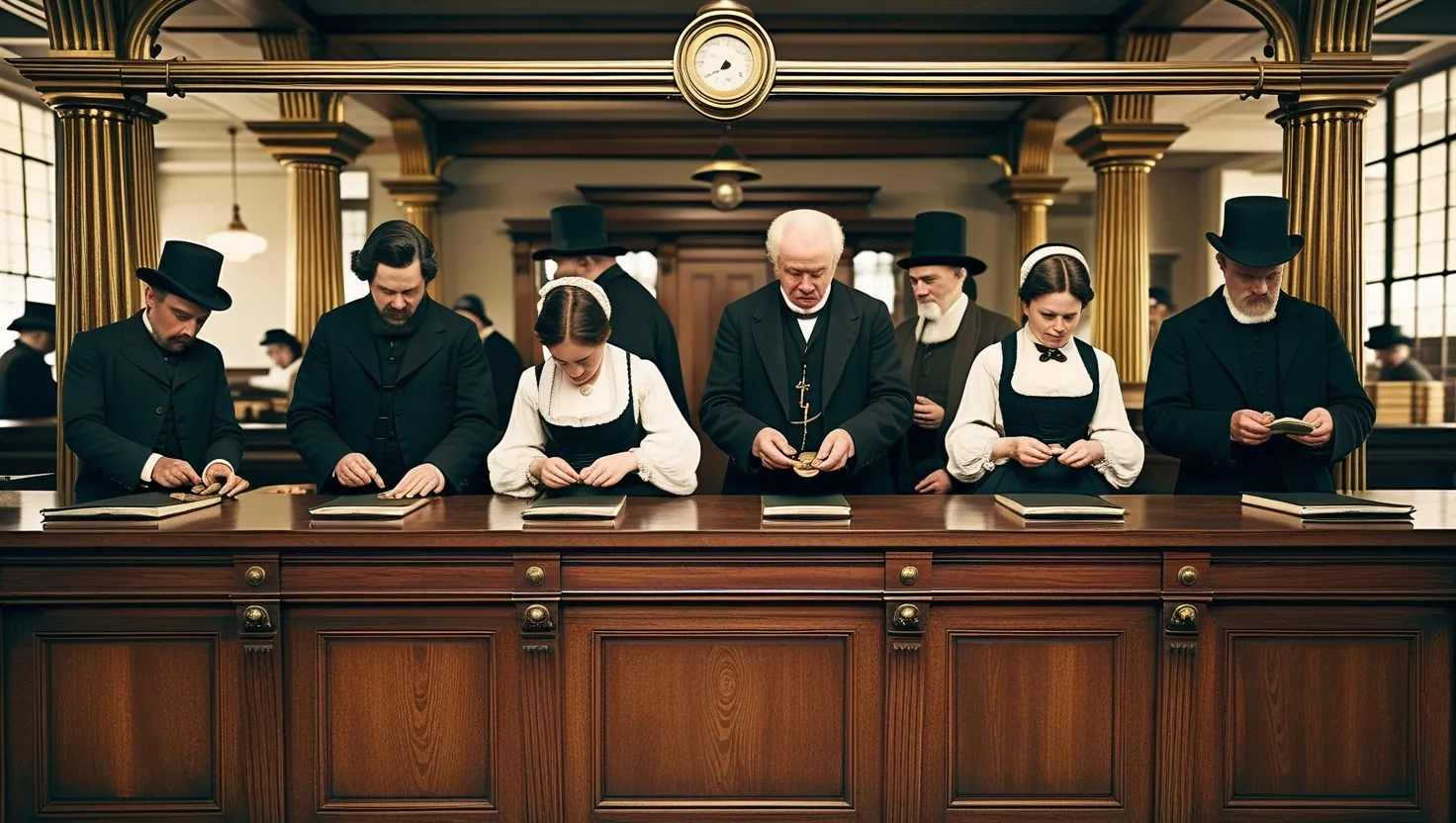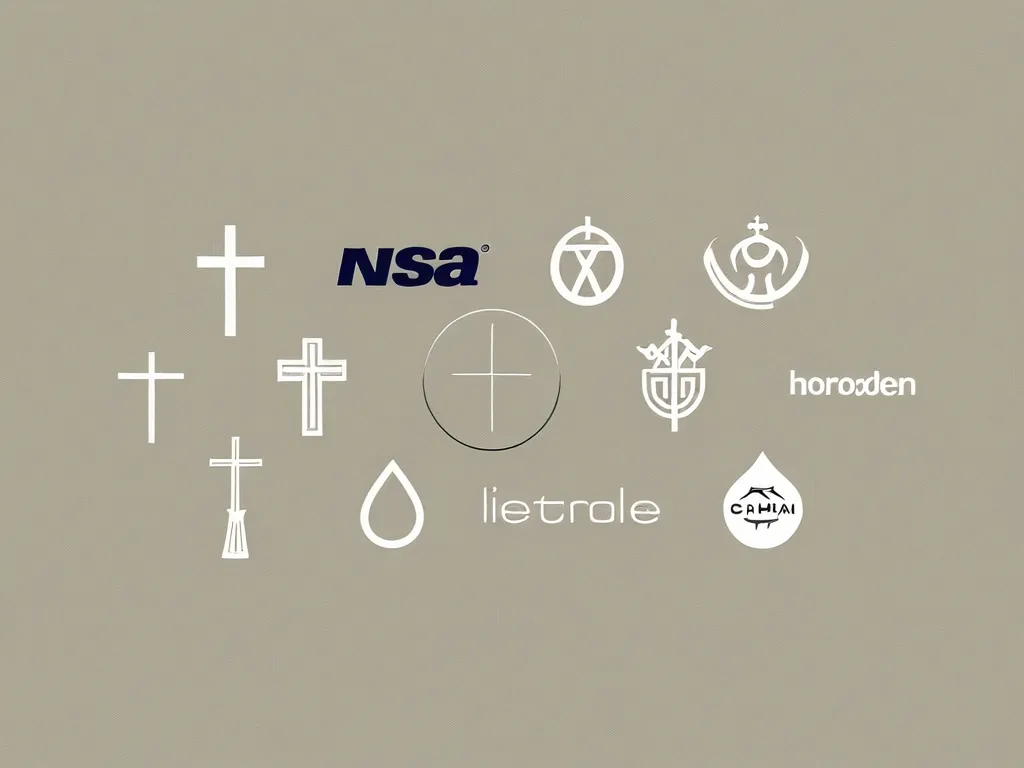If you’d asked someone in the summer of 1944 what the world needed most, their answer probably would have been simple: stability. The ashes of two world wars still smoldered, memories of hyperinflation and shattered economies were fresh, and global trade was tangled in a mess of tariffs and unreliable currencies. So, when delegates gathered at Bretton Woods in New Hampshire to design a financial system for a new era, they didn’t just want a set of economic rules—they wanted reassurance that chaos wouldn’t reign again.
The heart of their plan was straightforward: tie the major currencies to the U.S. dollar, and tie the dollar to gold. If you picture a line of dominoes, the U.S. dollar stood at the front, with gold as its backstop. Every other currency lined up behind, pegged directly or indirectly to the dollar at fixed rates. This model promised predictability. You knew what your dollar, franc, or yen would buy tomorrow, next month, or even next year.
But there’s a paradox in the origin of security. “The only thing we have to fear is fear itself,” Franklin D. Roosevelt famously said. And yet, systems built to banish fear often let complacency fester. At first, Bretton Woods delivered exactly what its architects craved. Trade rebounded, cross-border investment flourished, and the specter of currency wars faded. The IMF and World Bank offered backstops and funding to countries in trouble, giving global finance a security net it never had before.
Yet, beneath the surface, something entirely predictable was brewing. If you peg your currency, you lose part of your freedom. For the U.S., the privilege of having the world’s reserve currency came with the burden of serving everyone’s needs. As economies grew at different speeds and nations dealt with their own shocks, “one size fits all” exchange rates turned awkward—sometimes almost comically so.
By the early 1960s, the cracks began to show. The U.S. was spending heavily abroad, particularly on military commitments and development assistance, and the world was happy to accept dollars in return. What happens when more and more people hold IOUs backed by a finite stock of gold? Eventually, someone asks for payment. France was the most notorious, shipping dollars across the Atlantic and demanding shiny bullion in return. For the U.S., this wasn’t just an economic problem—it was political theater. Gold reserves started to dwindle, and with each shipment to Paris, faith in the system eroded a little more.
Have you ever wondered why trust is so fragile in money matters? One government’s promise, no matter how powerful, starts to look shaky if enough people doubt it at once. “Whoever controls the volume of money in any country is absolute master of all industry and commerce,” said President James Garfield. In the late 1960s and early 1970s, the world started to believe the U.S. couldn’t keep its promises without risking its own financial stability.
There’s a detail often missed when telling this story: several major currencies faced similar existential crises before the final collapse. The British pound, once a global titan, was devalued in 1967 in response to its own chronic deficits. The German mark broke ranks in 1971, floating free before the official end came. These moves weren’t just economic adjustments—they were diplomatic earthquakes, signifying loss of faith in the fixed rate regime.
The final blow famously arrived in August 1971, when President Nixon announced the U.S. would no longer convert dollars to gold. This decision, often called the “Nixon Shock,” stunned the world, but it shouldn’t have. The marvel is not that the system collapsed but that it endured for so long. With the gold anchor gone, the dollar floated, and soon enough, so did every other currency of consequence.
It’s tempting to cast the post-Bretton Woods world as more chaotic, but in fact, it allowed countries to breathe. Floating exchange rates meant that nations dealing with inflation, recessions, or booms could adjust their monetary policies without destabilizing the entire system. Flexibility replaced rigidity, even if it came at the price of predictability.
What’s less discussed are the unconventional winners and losers of this shift. For exporters and importers, the new world demanded a new skill set: managing currency risk. Businesses that once ignored forex fluctuations now hired specialists to hedge against sudden jolts in exchange rates. Sophisticated financial tools—like options and futures—found new relevance as instruments of insurance against the unknown.
Some countries, particularly those with robust institutions, benefited immensely. The floating regime provided room for innovation in monetary policy. For others, especially those with weak institutions or highly volatile economies, the risks multiplied. Currency crises in Latin America and Asia in the decades after Bretton Woods’ fall were far more severe than anything witnessed under fixed rates. Were these growing pains or signs of deeper flaws in the floating regime?
Another twist in this saga: the U.S. dollar’s role as the primary reserve currency persisted, if anything growing stronger after the gold link was severed. This outcome ran counter to what many predicted. The expectation was that countries would move to diversify their reserves, perhaps splitting their allegiances among a basket of currencies or commodities. Instead, the sheer scale of the U.S. economy, deep and liquid financial markets, and America’s geopolitical clout entrenched the dollar’s primacy.
As we look around today’s financial landscape, echoes of Bretton Woods debates resurface. Should the world rely so heavily on a single reserve currency? Could digital currencies or a new international basket provide greater stability? Advocates for cryptocurrencies often reference the collapse of Bretton Woods as evidence that traditional systems are vulnerable. The euro’s creation, meanwhile, was in part a response to the instability that followed the fixed-rate era—Europe’s answer to the question of how to regain control without returning to a gold standard.
The story of Bretton Woods is often used to illustrate the perennial tension between stability and flexibility in economic systems. What’s often forgotten is the psychological aspect. When fixed rates fell, so did a certain innocence; markets became more self-aware, quick to reward or punish perceived missteps. Central banks found themselves in a new game, one where trust was earned daily, not bestowed by a formal agreement.
There’s a famous line from John Maynard Keynes, who was at Bretton Woods as Britain’s chief negotiator: “The market can stay irrational longer than you can stay solvent.” This insight only grew more relevant after fixed rates disappeared. Currency traders and hedge funds rose to prominence, not because floating rates made markets irrational, but because they made them honest—prices now reflected real-time shifts in confidence and policy.
Would a return to fixed rates ever make sense? History suggests that such arrangements work best when global economic conditions are broadly aligned, and when member states are willing to subordinate national interests for the greater good. In practical terms, these conditions are rare and fleeting. The emergence of regional currency zones, like the euro, shows that countries will still trade some sovereignty for stability, but only within carefully constructed limits.
The legacy of Bretton Woods endures in subtle ways. Today’s international financial institutions, like the IMF and World Bank, still play crucial roles in crisis management, echoing their original mandates. Meanwhile, the debate about how best to ensure global monetary stability never truly dies. Central banks swap information and coordinate policy more than ever, haunted by memories of what happens when coordination breaks down.
Perhaps the most surprising lesson is how resourceful global finance has become. The world shifted from pegged rates to floating not because theory demanded it, but because practice forced its hand. The transition was messy, contentious, and at times frightening. Yet, it also sparked creativity, from new risk management tools to entirely new markets.
If you work in global finance today, you owe a debt not to the architects of Bretton Woods, but to those who improvised as the old order fell apart. It’s easy to forget how radical the shift to floating rates really was. Volatility, once seen as a threat, is now managed with an arsenal of tools unimaginable in 1944.
“Change is the law of life. And those who look only to the past or present are certain to miss the future.” This quote from John F. Kennedy resonates just as much in currency markets as it does in politics.
So, as you consider today’s debates about digital currencies, reserve diversification, or currency manipulation, remember that systems are made by people—and inevitably, they must bend when the world does. The lesson of the Bretton Woods transition isn’t that fixed rates were naïve or floating rates are perfect. It’s that adaptability, not dogma, is the true foundation of lasting financial stability.
What system would you bet on for the next fifty years? Will we see a new consensus or another grand experiment? The answer, like so much in finance, hinges on where trust is placed—and how easily it can shift.






